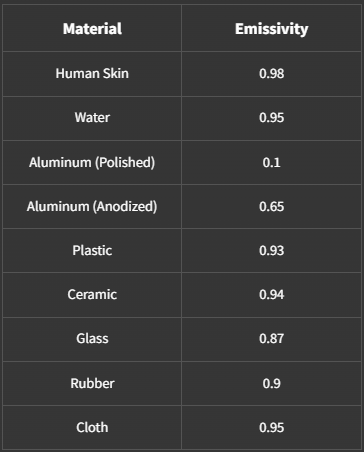Emissivity Examples
A material’s emissivity can vary at different wavelengths. Most materials, however, have relatively uniform emissivity throughout the wavelength range in which thermal imagers operate. For example, the emissivity of most plastics, ceramics, and metals does not vary significantly throughout the wavelength range of 7 to 14µm. Different materials can have widely different emissivity values within the range of 0 to 1.00 (see table below).
Many common materials including plastics, ceramics, water, and organic materials have high emissivity. Uncoated metals may have very low emissivity. Polished stainless steel, for example, has an emissivity of approximately 0.1 and therefore emits only one tenth the amount of energy of a blackbody at the same temperature.

Note: The emissivity date in the table above are approximate values. The emissivity of a particular material depends on its specific chemical makeup and surface characteristics. Smooth, shiny surfaces, for example, tend to have higher reflectivity and thus, low emissivity.
There are no comments for now.